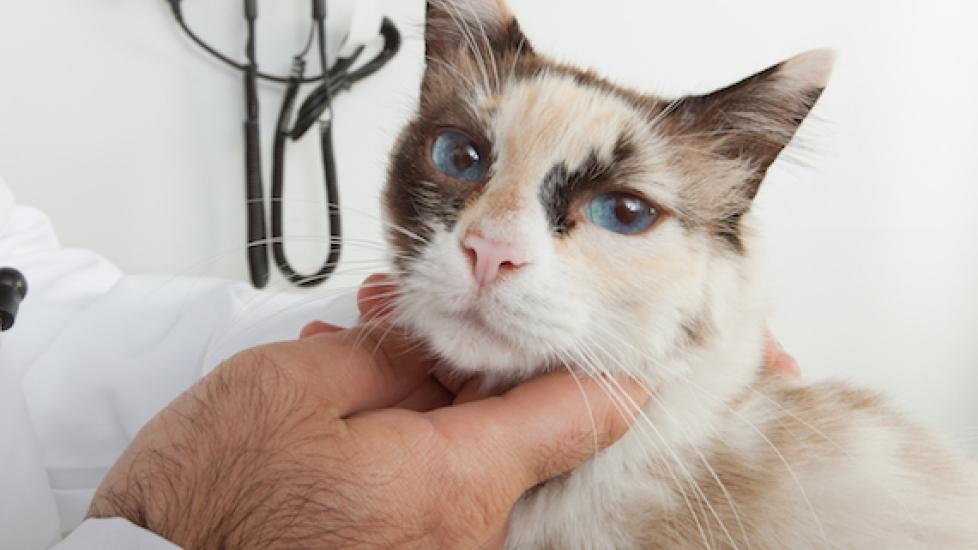Vaccine-Associated Sarcoma and Your Cat
A few weeks ago, I wrote about the importance of all cats being vaccinated against rabies. I touched briefly upon a possible side effect of vaccination — cancer developing at the injection site — but the topic warrants a bit more attention, so here we go.
The official name for this type of cancer is vaccine-associated sarcoma (VAS). There are a lot of different types of sarcomas out there. The one that is most commonly seen at injection sites is called a fibrosarcoma, but other sarcomas are also possible (e.g., malignant fibrous histiocytomas, osteosarcomas, rhabdomyosarcomas, liposarcomas, chondrosarcomas, and undifferentiated sarcomas). The different names relate to exactly what type of cell has become cancerous.
All of these sarcomas can and do develop in cats that have not been vaccinated, particularly if a cat is infected with the feline sarcoma virus, but they are pretty rare. So, if one develops at the site of a previous injection, it is generally assumed to be caused by that injection.
Sounds simple, yes? Well, unfortunately that is not always the case. VAS can develop anywhere from a few months to many years after an injection has been given, and veterinarians have not always been good about writing where injections are given in a pet’s record. This is changing, as injection sites for vaccines are becoming standardized (rabies right rear leg, feline leukemia left rear leg, feline distemper right front leg), but before VAS was recognized as a serious problem, many vets simply gave any injection wherever was easiest (often between the shoulder blades) and didn’t bother to record the location.
To complicate matters even more, older rabies and feline leukemia vaccines (those that contain killed, whole viruses and adjuvants to increase the immune response) appear to be the culprits in many VAS cases, but the disease has also been associated with other injections that can cause a significant amount of inflammation at the injection site (e.g., long-acting steroid injections). The thought is that inflammation is what causes cells in the area to mutate and become cancerous, and some cats may be genetically predisposed for this to occur. The website for the American Veterinary Medical Association’s Vaccine-Associated Sarcoma Task Force is an excellent place to go if you are interested in the nitty gritties of VAS.
To reduce the likelihood that your cat will develop a vaccine-associated sarcoma, make sure your veterinarian is following the American Association of Feline Practitioner’s vaccination guidelines, and that non-adjuvanted vaccines are used whenever possible. Also, give your cat oral medications versus long-acting injections (e.g., prednisolone pills versus a repositol steroid), if you are able to do so.
VAS can be successfully treated, but it may take radical surgery, sometimes in conjunction with radiation treatments and chemotherapy, to do so. Amputating an affected leg has the greatest chance for affecting a "cure," which is why vaccines are now given low down on the legs.
Watch your cats for new lumps and bumps, particularly around injections sites. Do not panic if a small bump appears soon after a shot is given. As long as it goes away within a month or so, it is nothing to worry about. But any mass that persists or grows over time should be checked out by a veterinarian.

Dr. Jennifer Coates
Image: La India Piaroa / Shutterstock


